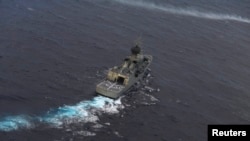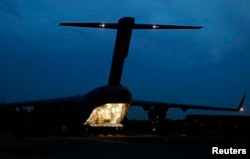Australia will spend an extra $21 billion in defense spending over the next decade. The government says it reflects concern over rapid militarization in the Asia-Pacific region.
The specifics of Australia's defense priorities for the next decade were revealed in a policy document released Thursday by Australian Prime Minister Malcolm Turnbull.
The biggest investment will be the construction of 12 submarines, with additional funds for other naval vessels, fighter jets and more than 62,000 personnel, its biggest permanent force since 1993.
Under Turnbull’s blueprint, defense spending will make up two percent of Australia's national income within five years.
There is concern in Canberra over China’s militarization of the South China Sea, and officials concede the new policy document reflects Australia's “growing discomfort” with Beijing's military activity.
Speaking Thursday in the national capital, Canberra, the Prime Minister said Australia had to respond to military changes in its region.
“The relationship between the United States and China, how it develops and grows, will be critically important. We welcome China's rise and its greater capacity to share responsibility for supporting regional and global security. We will seek to build on our already strong military ties with Indonesia - that vibrant, stable democracy to our north,” said Turnbull.
Analysts believe the Australian defense plan highlights Canberra’s willingness to work with other countries to maintain regional stability, and should not be seen as sending a direct warning to China.
They add that Australia must tread a delicate diplomatic path -- developing its longstanding military alliance with the United States and bolstering ties with India and Japan, while at the same time nurturing its relationship with China, its biggest trading partner.








